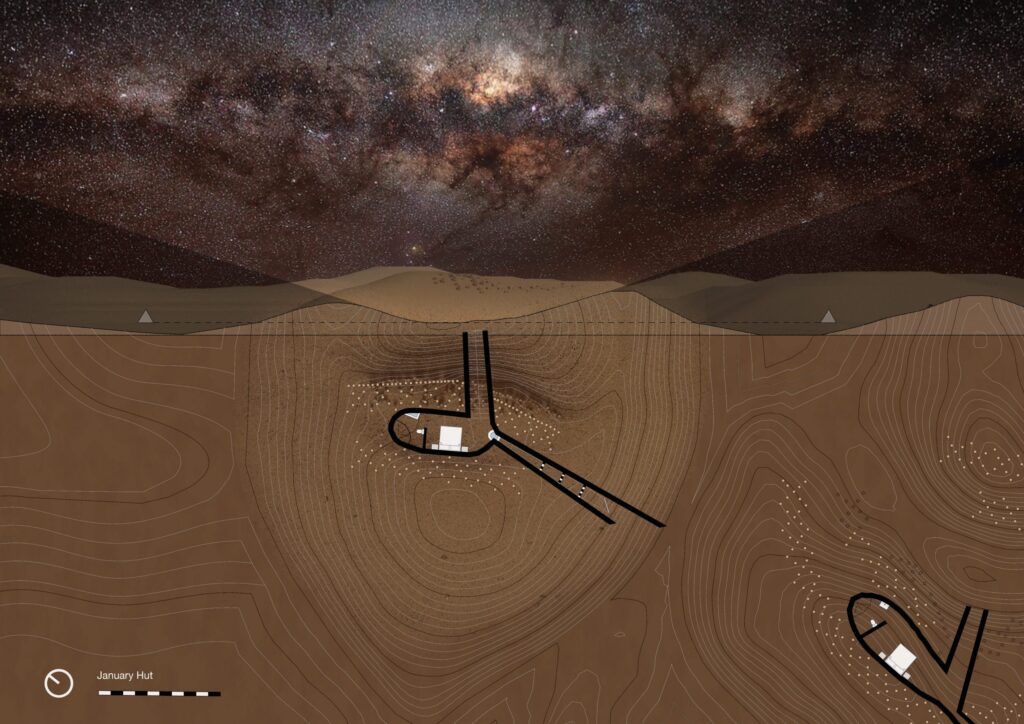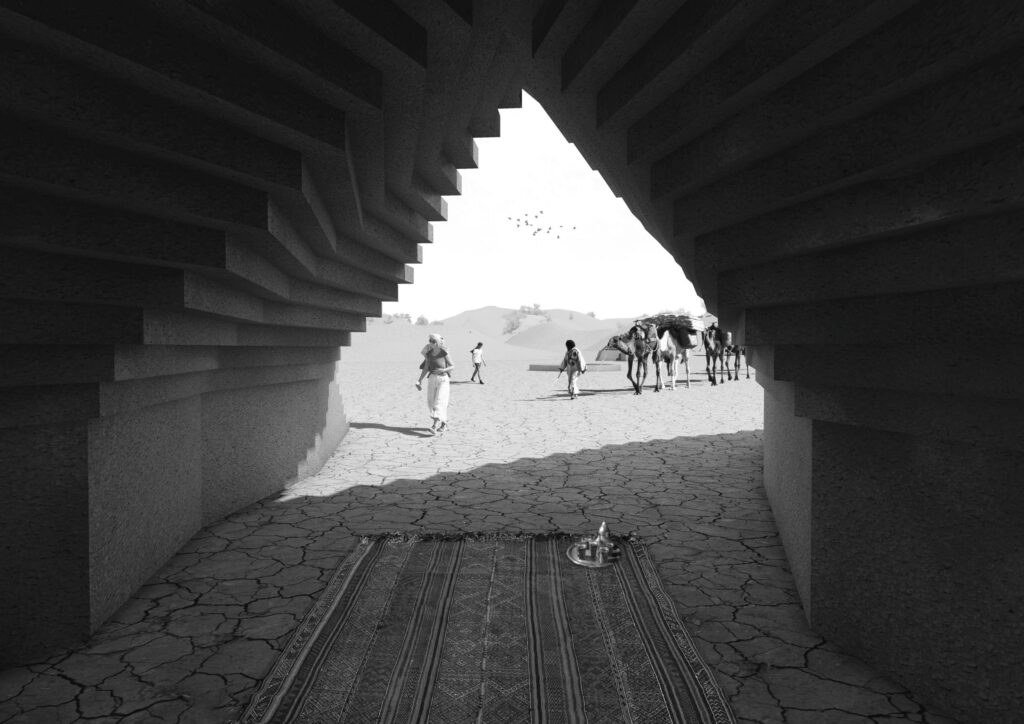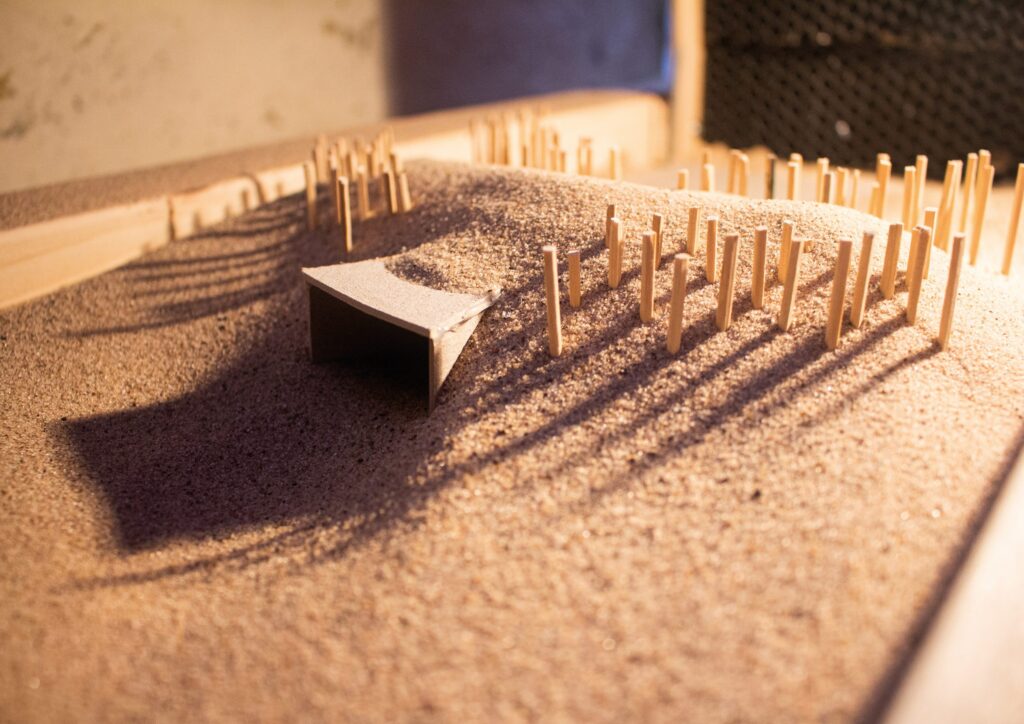“Hajiz Alriyah – Wind Barriers”
The focus of the investigation explores how wind and sand movement can be harnessed to create an inhabitable dune landscape in an extreme desert environment. Many coastal communities use fence systems, which disrupt air movement and deposit sand, in turn creating dunes that protect their communities from adverse weather. Through observations and experiments in the desert, and physical testing in a homemade wind tunnel, the potential for generating specific dune forms was developed.
The project is set in the Sahara Desert, 5km North of M’Hamid El Ghizlane, Morocco, a town which has benefited in recent years from a growing interest in desert tourism. As a means of demonstrating the new architectural language developed through the research, an entirely new tourist experience is being proposed.
Due to the lack of light and air pollution, views of the Milky Way in the desert create a vivid experience, and using new generative techniques to form an inhabitable dune landscape, my proposal frames specific views of the breath-taking desert night sky for each month of the year. Living within the dunes, the experience aims to allow visitors to reconnect with nature, in a primal experience that will remind visitors how powerful the presence of passive natural systems can be when inhabiting an extreme environment.

Masterplan and Site Section

January Hut, Plan and Section

View From Communal Hut

Windtunnel Test
CONTACT EMAIL: tom.thwaites@outlook.com
LINKEDIN: https://www.linkedin.com/in/thomas-thwaites-16a447138/
Curated by Thomas Thwaites
